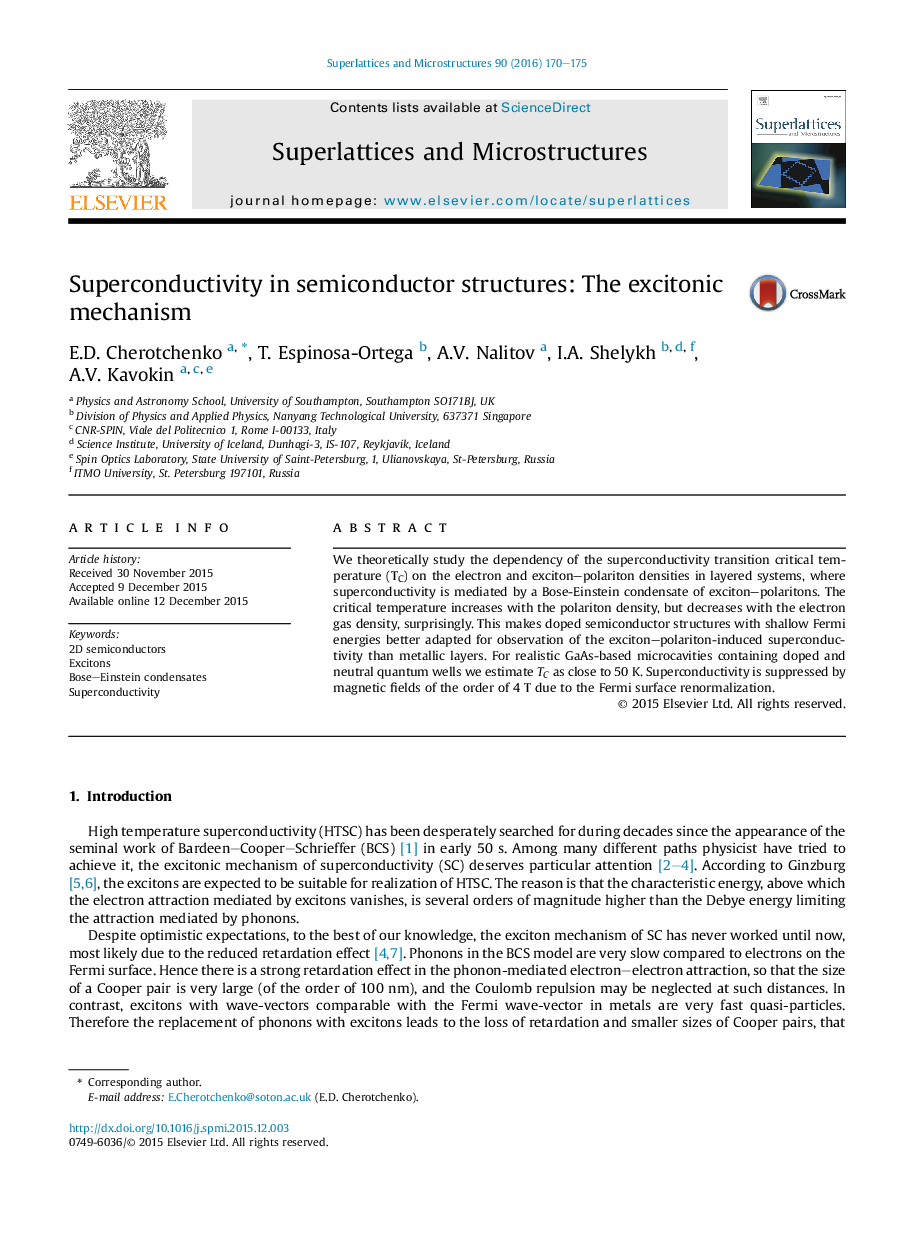| کد مقاله | کد نشریه | سال انتشار | مقاله انگلیسی | نسخه تمام متن |
|---|---|---|---|---|
| 1552786 | 1513211 | 2016 | 6 صفحه PDF | دانلود رایگان |
• Theoretical calculation of effective electron–electron interaction in GaAs-based microcavities.
• Theoretical evaluation of critical temperature of transition to superconducting state.
• The investigation of magnetic field influence; theoretical estimations of critical magnetic field.
We theoretically study the dependency of the superconductivity transition critical temperature (TC) on the electron and exciton–polariton densities in layered systems, where superconductivity is mediated by a Bose-Einstein condensate of exciton–polaritons. The critical temperature increases with the polariton density, but decreases with the electron gas density, surprisingly. This makes doped semiconductor structures with shallow Fermi energies better adapted for observation of the exciton–polariton-induced superconductivity than metallic layers. For realistic GaAs-based microcavities containing doped and neutral quantum wells we estimate TCTC as close to 50 K. Superconductivity is suppressed by magnetic fields of the order of 4 T due to the Fermi surface renormalization.
Journal: Superlattices and Microstructures - Volume 90, February 2016, Pages 170–175
